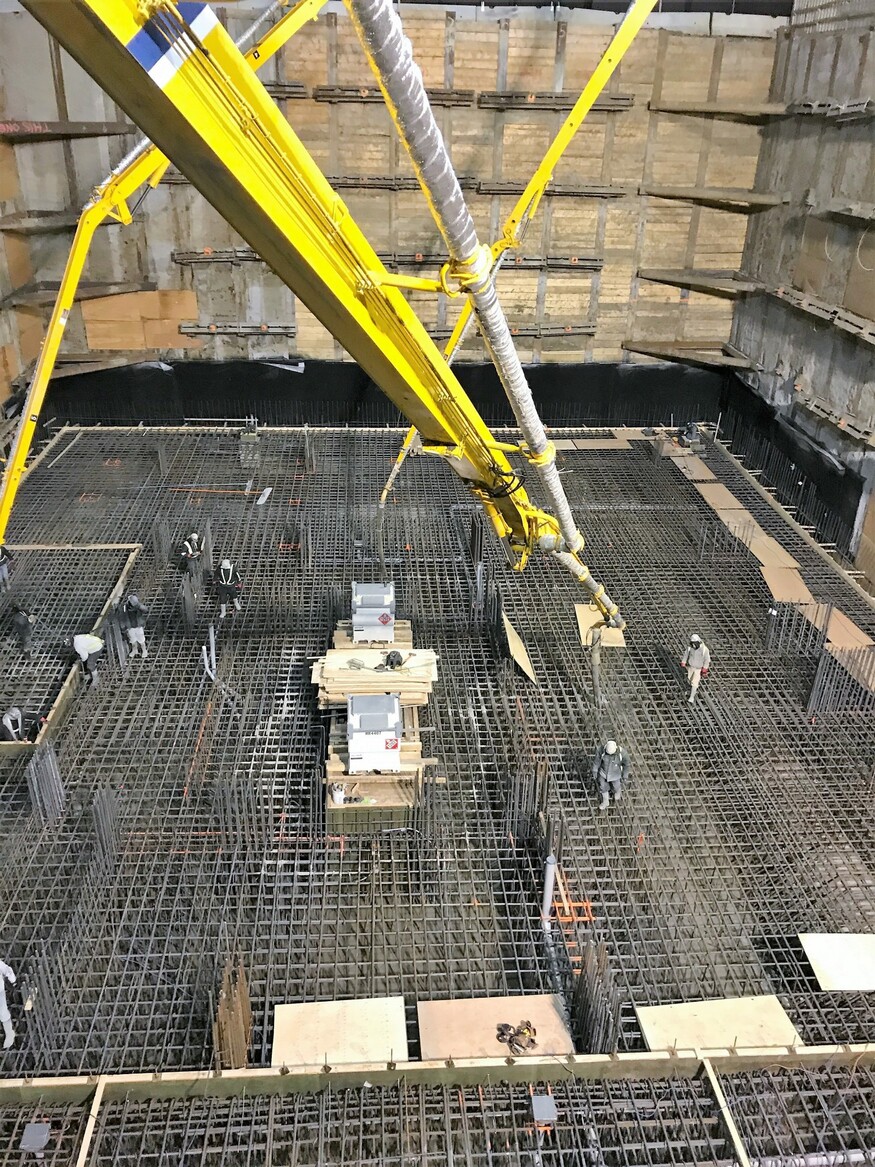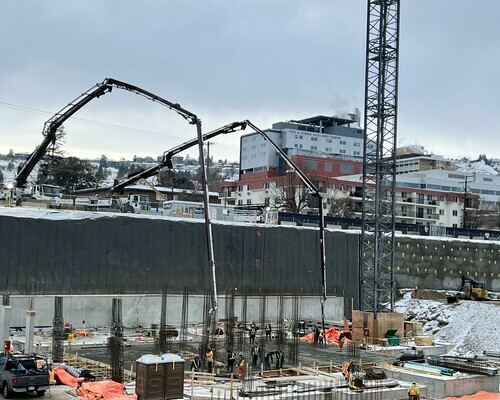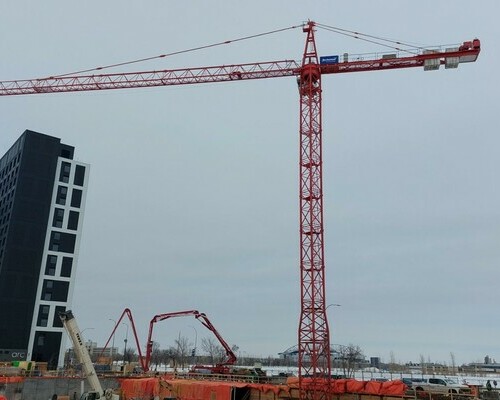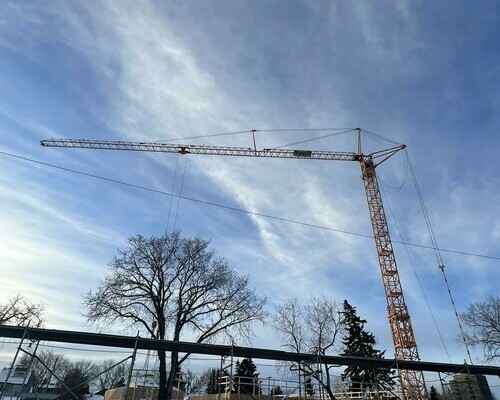
Sustainable development is commonly defined as “the development that meets the needs of the present without compromising the ability of future generations to meet their own needs”. Sustainable development implies affordability, continued availability, durability, energy efficiency and eco friendliness. It incorporates the environmental, economic and social considerations often referred to as “the three pillars” of sustainability.
As the green building industry evolves, so has the way concrete helps structures become more sustainable.
ENERGY EFFICIENCY
In the United States, the buildings sector accounted for almost 40% of primary energy consumption in 2008, 43% more than the transportation sector and 24% more than the industrial sector¹.
This is a consistent trend across the globe. Concrete structures have higher energy efficiency because their thermal mass can absorb, store, and later release significant amounts of heat. This can lead to reduced energy costs for the following reasons:
CONCRETE’S THERMAL MASS WILL AVOID OR REDUCE TEMPERATURE SWINGS IN THE BUILDING AND REDUCE THE USE OF AIR-CONDITIONING SYSTEMS.
CONCRETE WALLS AND FLOORS ARE EFFECTIVE STORAGE HEATERS, ABSORBING FREE HEAT FROM THE SUN DURING THE DAYTIME AND RELEASING HEAT AT NIGHT.
CONCRETE WALLS AND FLOORS CAN REDUCE COSTS ASSOCIATED WITH BOTH INDOOR AND OUTDOOR LIGHTING DUE TO ITS REFLECTIVE PROPERTIES.
HEALTH & COMFORT
The issue of indoor air quality is a major health concern, as studies show that people in industrialized nations spend more than 90% of their time indoors². Poor indoor air quality can affect people susceptible to allergies, respiratory disease or even contact lens wearers.
A number of factors can contribute to poor indoor air quality including: tobacco smoke, high volatile organic compound (VOC) levels, and odours from chemical products³.
Concrete improves air quality because it does not hold allergens produced by dust mites, sustain mildew or give off harmful VOCs. Concrete also acts as an air barrier that limits the amount of moisture entering a building and provides better control of air flow from HVAC system.
Concrete’s mass in the walls and floors provides an excellent barrier of airborne sounds such as speech, musical instruments and loudspeakers (stereos, radios, TVs and home theatre systems). Concrete also provides good impact sound insulation to reduce noise such as footsteps and furniture moving.
MANUFACTURING PROCESS
The process for manufacturing cement has increased its sustainability practices as well. Cement is the binder, holding together the other ingredients of concrete. Energy consumption in the cement industry has declined significantly over the past 50 years. This is mainly attributable to improvements in plants and process technologies. To reduce dependence on conventional fuel, the cement industry has begun utilizing waste fuels that would otherwise be burned unproductively in incinerators. By 2020, the industry aims to reduce CO2 emissions by 10% from the 1990 baseline levels. To achieve this goal, the cement industry has adopted a three-part strategy: improve the energy efficiency by upgrading plants with state-of-the-art equipment; improve product formulation to reduce manufacturing energy consumption and minimize the use of natural resources; and conduct research and develop new applications for cement and concrete that improve energy efficiency and durability.
LIFE CYCLE
Construction and demolition (C&D) wastes account for a significant share (approximately 25%) of Canada’s non-hazardous solid waste stream disposed of currently in sanitary landfills. Concrete is durable and built to last. Many concrete building systems can withstand the raw forces of wind, flood or fire. Because concrete structures are so solid and long lasting, their shells can often be maintained in reconstruction projects. At the end of its life cycle, concrete can be recycled for minimum environmental impact. The goal of “zero landfill” of concrete can be achieved if the structure is carefully planned and designed, and if the building undergoes successful renovation and demolition. Recovered concrete from C&D wastes can be crushed and used as aggregate. It is mainly used for road bases and sub-bases, but new concrete can also be made using a percentage of recovered
waste material.
LEED CERTIFICATION
Using concrete can aid in the process of obtaining the Leadership in Energy and Environmental Design (LEED) Green Building certification. Green building practices can result in significant energy and cost savings over the life of the structure. Studies have also shown that workers in these environments have increased labor productivity, job retention, and days worked. These benefits contribute directly to a company’s profits because salaries are the largest expense for most companies occupying office space—about ten times higher than rent, utilities, and maintenance combined. Concrete can help earn points toward LEED certification in the five main credit categories of sustainable sites, water efficiency, energy and atmosphere, materials and resources, indoor environmental quality.
There are 16 to 26 LEED points (out of a maximum 69 points) available for using concrete. Specifically, points for concrete use are available for
the following:
BROWNFIELD REDEVELOPMENT
SITE DEVELOPMENT: PROTECT OR RESTORE HABITAT
SITE DEVELOPMENT: MAXIMIZE OPEN SPACE
STORM WATER DESIGN: QUANTITY CONTROL
HEAT ISLAND EFFECT: NON-ROOF
MINIMUM ENERGY PERFORMANCE
OPTIMUM ENERGY PERFORMANCE
BUILDING REUSE
CONSTRUCTION WASTE MANAGEMENT
RECYCLED CONTENT
REGIONAL MATERIALS
CONCLUSION
At Pagnotta, we think concrete is beautiful. Its strength, functionality, sustainability and versatility in all environments is what sets it apart from all other building materials. We take great pride in the workmanship and integrity of the concrete structures we build and the skylines that we have changed. Pagnotta strives to be an industry leader in concrete structures and will continue to offer a superior product that will stand strong for generations to come.
RESOURCES
http://buildingsdatabook.eren.doe.gov/
ChapterIntro1.aspx Building Energy Data BookUS Department of Energy
U.S. Environmental Protection Agency, Office of
Air and Radiation. Report to Congress on Indoor
Air Quality, Volume II: Assessment and Control
of Indoor Air Pollution, pp. I, 4-14. EPA 400-1-89-
001C, 1989.http://www.concretethinker.com/solutions/
Indoor-Air-Quality.aspx Portland Cement
Association4. http: / /www.cement .org/smrepor t09/
sec_page3_1.htm Report on Sustainable
Manufacturinghttp://www.cement.org/buildings/green_leed.
asp Building Green with Concrete


